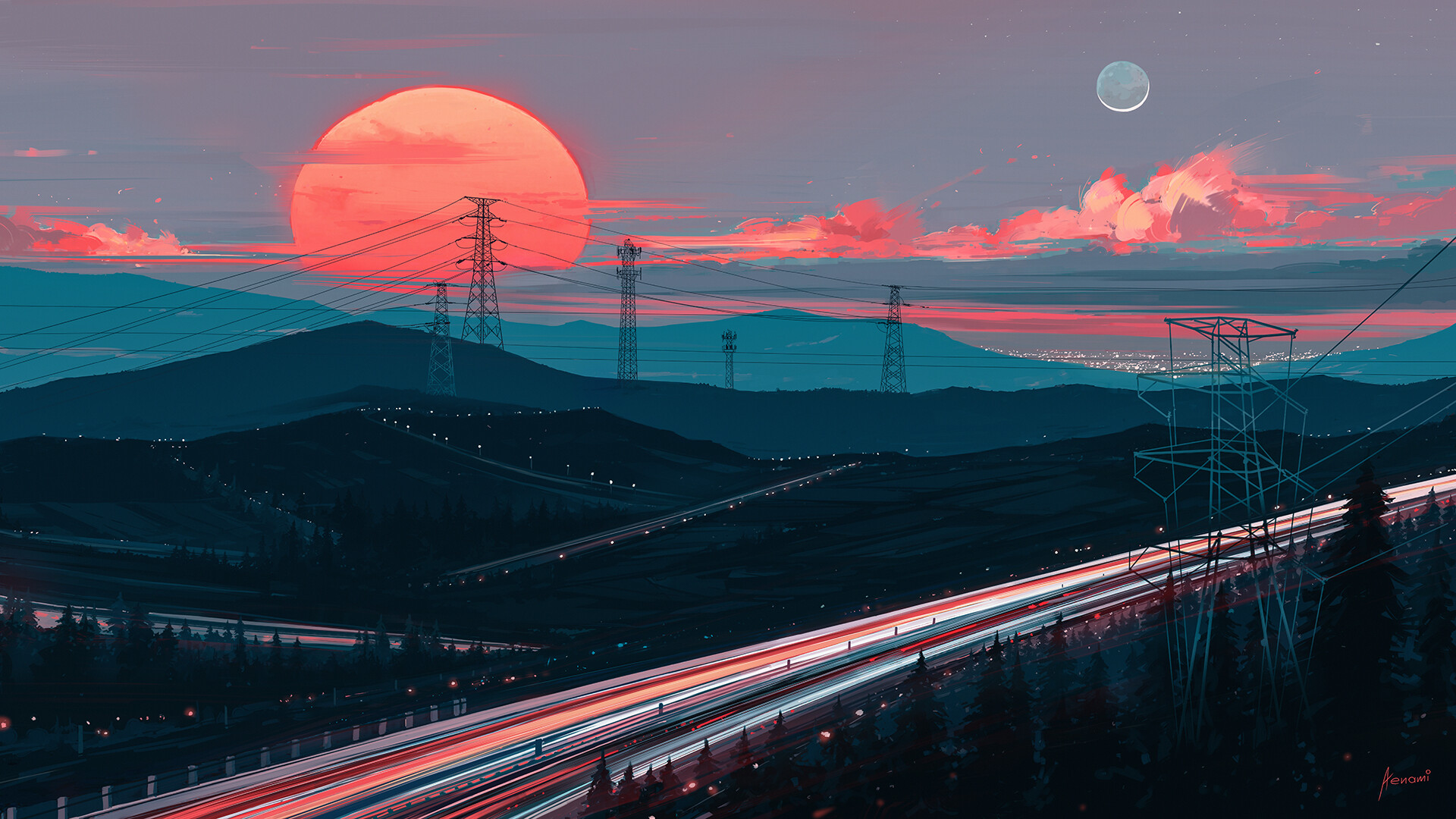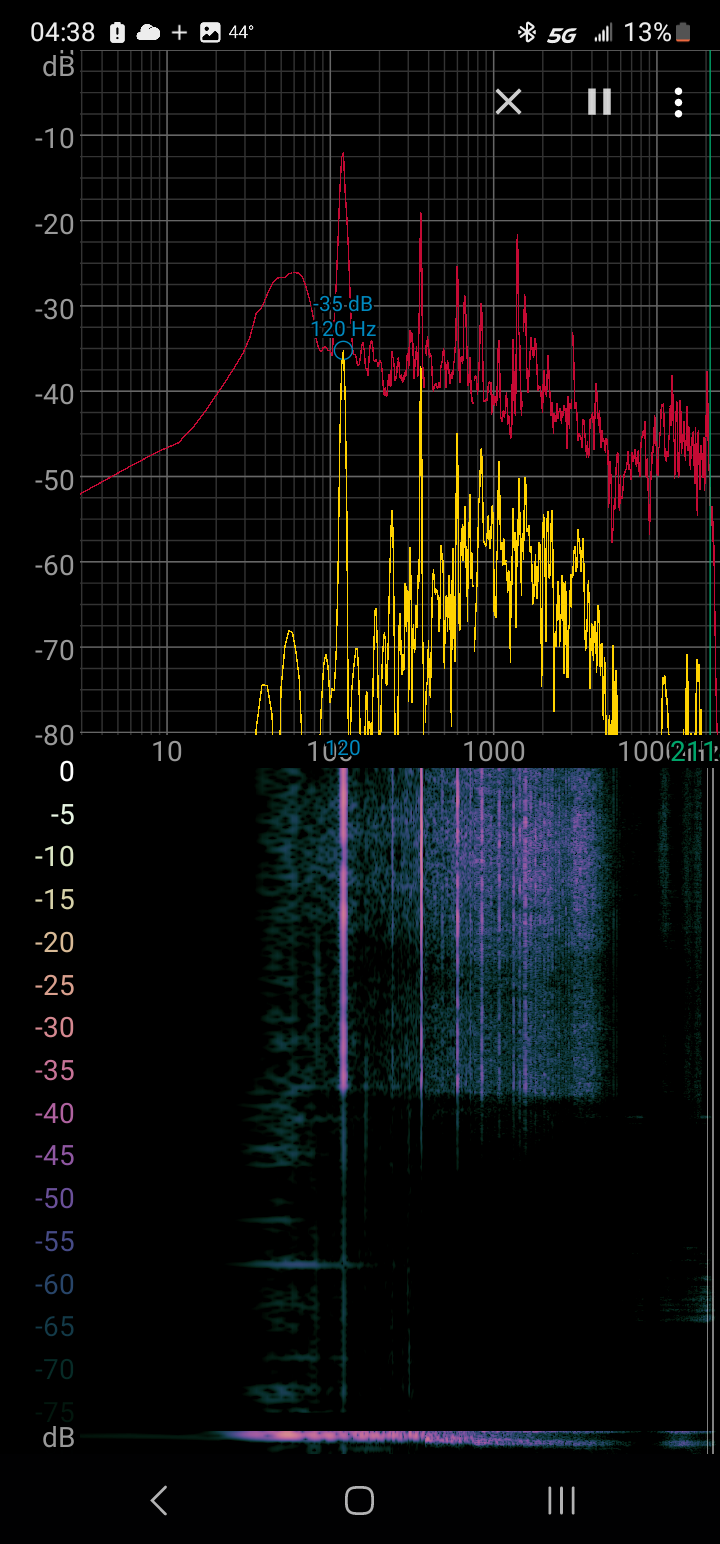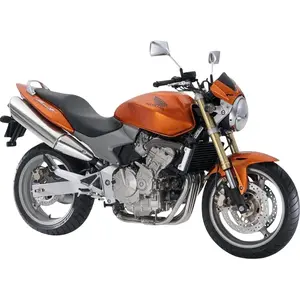Check out the photography by Alex Hyner for some amazing skies between the power lines
This was the first thing I thought of, but couldn’t remember the artists name - thank you!
Somewhere. Somewhere Japan
It me, in somewhere Japan a couple days ago

Me somewhere Japan yesterday

I’ve actually come to like the aesthetic in certain contexts. Maybe because a lot of cointries bury their power lines so seeing them snake through the countryside evokes a more quaint and raw setting than I’m used to.
I’ve been to Kyushu once and it was really lovely down there so I’d like to get back and see more of the place.
This person makes really beautiful digital art that features a lot of power lines. I think it’s really cool. Example:

For over a decade every one of my wallpapers was an Aenami piece. They’re just so dang cool.
I can’t find the exact shot, but I used to have a picture of the 220kV lines parallel to the Desert Road as my desktop background. Something like this:https://johnmathews.smugmug.com/Nov-18-Desert-Road-North-Island/i-CkSm5tK
While they do affect the skyline, i find them kind of a great. Its like wind turbines, they serve a very easy to understand purpose and exist for everyone while having only little environmental impact and lasting a lomg ass time. Compared to infrastructure like starlink which will only ever serve a few people, obstructs the entire sky for everyone from any angle and will only function for a few(5) years before having to be replaced.
while having only little environmental impact
If they’re properly maintained… fucking PG&E!
Nice!
[email protected] material right there.
Wow, thanks for the link. It’s beautiful
Thank you for uploading the full rez. Gimme gimme! <3
I think the long distance transmission lines are kind of neat. They often become roosts for hawks and eagles here, gives you a chance to see some nature near the city.
The linked comic is ugly as sin though, that’s a high voltage rat nest. And I’m sure there’s a happy medium to be found with that sort of electrical pole, but it doesn’t give me the feeling of serenity that the high tension towers do.
Underground transformers seem to be the better approach for denser connectivity
What is your solution?
Underground cables.
Underground works well for greenfields construction, where you can map everything out ahead of time and don’t have to deal with existing underground services.
It’s manageable on low-density streets where its really only three waters and maybe some telephone lines.
It’s a nightmare to underground existing infrastructure in dense environments. Underground is already full of three generations of critical comms, corroding gas, water, HV lines that will fail if you look at them wrong, and if you’re really unlucky, steam pipes too.
The EU has been burying their wires for a while, and new members are doing it too. Romania used to look like 2nd pic, not so much anymore. It works.
The municipality I lived in previously had a really interesting project where they were trying to improve the lifecycle of underground infrastructure.
Instead of digging up the ground, putting in/repairing something/whatever, and then covering it up, they were going to install a permanent ‘infrastructure tunnel’ which could have installations and repairs be done without digging up and covering.
If successful, this kind of seems like what the shipping container did to the shipping industry, an incredible efficiency play.
Plenty of cities have ‘steam tunnels’ used for far more than just steam pipes, and sometimes no steam in there at all. It’s an awesome solution where you have reasonable density, and especially for within a facility/campus.
I don’t think you’re going to see it happen in surburban streets. It’s the tyranny of the car.
Some forward thinking - which we all know is most definitely not a thing when it comes to suburban development patterns - would see these installed from the beginning to ultimately save money long term on maintenance and upgrades.
Since the suburbs are an unsustainable Ponzi scheme designed to cram as much money out as possible though, they will go for the cheapest up-front option, total lifetime cost be damned.
I expect structural life of the tunnels isn’t much longer than the services within them, especially with roads above.
It’s manageable on low-density streets where its really only three waters and maybe some telephone lines.
Have you ever been to a german city? Underground power cables are the norm here, especially in densly populated areas. Usually only railroad power cables and high voltage long distance lines are above ground.
Yeah, we have lots of underground services here in NZ. It’s when you start getting to low population densities that you start having trouble doing it.
And that’s always the best solution? You see no reason for above ground cables?
If I’m gonna be entirely honest, I think power lines are really nice looking. I even have them as my phones wallpaper. Maybe it’s just because I have a interest in infrastructure or something, idk
for real though the second drawing is way nicer than the first
me too! I love em, but that’s just because I hate all the new stuff we have got. So I like to find comfort in the old things, that are still used everyday.
I know it’s totally backwards, but I feel weird when I go to a neighborhood that doesn’t have above ground lines.
ah, beautiful Québec :)
More like “Yes And”.
Power and telecom lines are one of the more organic and chaotic parts of an urban environment. I live somewhere that has loads of them, including trollycar lines. In some places it’s pretty thick.
I love it. It adds a layer of aesthetic that prevents the world from looking too minimalist, which is nice since that’s where most new architecture is headed…
Yes
But
not getting power
Put it in the ground
And have to dig up even more earth using even more big machines? If you did a 50ft power line underground, that’s 50 ft of earth that has to be dug up, not to mention what happens whenever something inevitably goes wrong and you have to dig it all up again. Then you also have to bury transformers, which means you need to cool them.
There’s many, many good reasons that we use power lines over burying them. Mostly, power lines are so significantly cheaper and easier that it’s not even comparable. I’ve seen the bill when a buried fiber line gets broken. It is crazy expensive.
PG&E has been having to cut off power for swaths of customers in California every time we get in a red-flag fire weather situation, because their power lines over the mountains sway and spark and have caused horrendous wildfires. Notably the Camp Fire that completely destroyed the town of Paradise, killing over 85 people and thousands of animals. It’s been pretty expensive for them. Of course, they saved money for decades by skimping on maintenance, but that all went in their executives’ pockets, so they’re having trouble with trying to get up to code and pay their court costs and fines
i don’t know of a single town here that has overhead power lines in populated areas. those are for long-distance transmission only.
or, okay, i know of one. but that’s because there’s a steel mill and a hydropower plant there, and you don’t wan to bury lines that carry that around of energy.
Obviously you hire groundhogs and keep their sensory whiskers to the grindstone with the threat of mole scabs
Different countries have different needs. In the US you have hurricanes so it makes sense to.protect the power lines above ground, but here we just had a flood, do you want us to loose power for months everytime it rains a lot? It makes a lot nore sense to us to have it above ground.
I’M AN ADULT!
So many things
To put in the ground
Like this and this and this and even this
The highways are even worse.
Oh, I just watched that episode of Serial Experiments Lain.
This but unironically.
Fuck appeals to nature.
I love nature. Termite mounds are nature, honeycombs are nature, spiderwebs are nature. Humans are a part of nature and our infrastructure is a part of who we are.
Carving out exceptions for human artifacts like this takes for granted that a bunch of arboreal primates figured out how to melt down the rocks themselves to extract their purest essence, then wound that essence into ropes that contain the lightning we learned to generate ourselves to power the many other artifacts we developed to bring light into our dwellings, communicate with primates on the other side of the planet, and automate the menial tasks of our lives.
While certainly selfish and misguided at times, everything we make is nature, just as much as honeycombs and spiderwebs.
Honestly, to me the ironic part is the power lines in this artwork are unappealing to me because of the artist not the subject matter. It seems they don’t know what all the lines are or where they go or how they work, so when I look at it and do know what it’s supposed to look like, this just looks like a mess that makes zero sense. The artist has created some sort of electrical fire hazard.
I’ve seen some polls significantly worse than that, but not in a developed country.
I suspect that came directly from irl
I think clean power lines look nice. I’d definitely prefer them to a butterfly killing roadway or lighted poles that create light pollution and confuse wildlife.
https://www.sierraclub.org/sierra/what-s-killing-monarchs-our-roads
Plant the fields, not the roadways, got it
This is like the R. Crumb style
Haibane Renmei (left), Serial Experiments Lain (right)
just needs a subtle background hum and everything is complete.
50hz120hz is such a soothing toneit’s technically not just a 50hz flat tone, it’s quite a complex sound for what should be a sinewave. Soothing nonetheless though.
I’m too lazy to go plot it in a spectrogram or something, maybe someone else will do it lol.
Huh. I didn’t really think through what the tone would actually be, I just assumed it was the same as Tokyo’s power grid. I put on a sample of the power grid noise from the show, and held my headphones up to my phone’s mic to get a peek at the spectrogram:

Buncha spikes at every multiple of 120, fading out around 1560hz
Interesting note, the very faint lone 120hz spike is just the ambient noise of my room, when I’m not holding my headphones up to the mic. New canon fact: SEL takes place in an alternate timeline where Tokyo (if not all of Eastern Japan) got 60hz power
My entire factorio server looks like the second photo. India style.
Would be a nice QoL update to adds underground poles lol

























